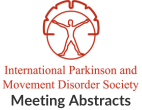Cognitive function and depressive symptoms among older adults with serious difficulty walking in Americans
Objective: The objective of this study was to ascertain level of cognitive function and its relationship with depression in American older adults with serious difficulty…Early-onset peak dose Levodopa induced dyskinesia in elderly Ethiopian Parkinson’s disease patient
Objective: The aim was to report an early onset peak dose dyskinesia in a 55 years old Parkinson's disease patient who was naive to treatment…The clinical features, treatments and genetic characteristics in Chinese children with dopa-responsive dystonia
Objective: To investigate the clinical manifestations, treatment and genetic characteristics of dopa-responsive dystonia (DRD). Background: Dopa-responsive dystonia (DRD) is resulted by variants of GCH1, TH and SPR. There…Prevalence of Spread of Dystonia and its effect on health-related quality of life in an Irish population with adult-onset isolated cervical dystonia.
Objective: We aim to characterize clinical and demographic features and assess prevalence of spread of dystonia in relation to health-related quality of life in CD…Altered perceptual hand maps in focal hand dystonia
Objective: To assess implicit hand maps in patients with focal hand dystonia (FHD). Background: In FHD, changes in the perception of tactile stimuli are suggested…Time matters in brain health: how can health systems respond to the growing demand for genetic testing?
Objective: The global burden of neurodegenerative disease is increasing and health systems are not yet equipped to manage large numbers of people who are at…Thiazolidinedione use is associated with reduced risk of Parkinson’s disease in patients with diabetes
Objective: This meta-analysis is aimed to explore the association between thiazolidinedione (TZD) use and Parkinson’s disease (PD) risk. Background: Recent epidemiological studies found protective effects of TZD class of drugs in…Association between prediagnostic symptoms and patterns of treatment initiation in people with Parkinson´s disease in the United Kingdom
Objective: To explore the association between prediagnostic symptoms and treatment initiation in people with Parkinson´s disease (PD) Background: Prediagnostic symptoms in people with PD may…Late onset Wilson’s disease with hepatic and neurological manifestations
Objective: To report a patient with clinically diagnosed late-onset Wilson’s disease (WD). Background: WD is an autosomal recessive disorder of copper biliary excretion caused by…Changes in fecal microbiota composition in patients with Huntington’s disease in China
Objective: Gut-brain axis has been associated with multiple brain disorders [1,2,3]. This study is to explore fecal microbiota changes in Huntington's disease (HD). Background: Huntington's…
- « Previous Page
- 1
- …
- 74
- 75
- 76
- 77
- 78
- …
- 149
- Next Page »
